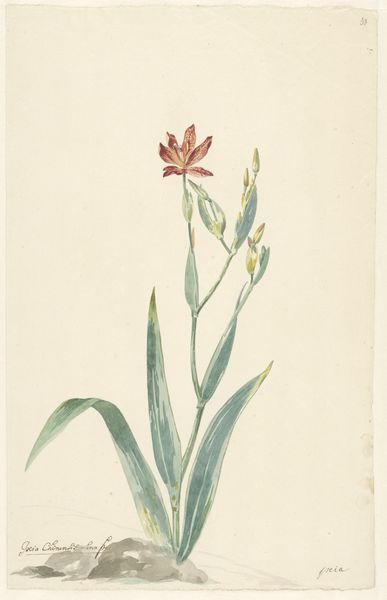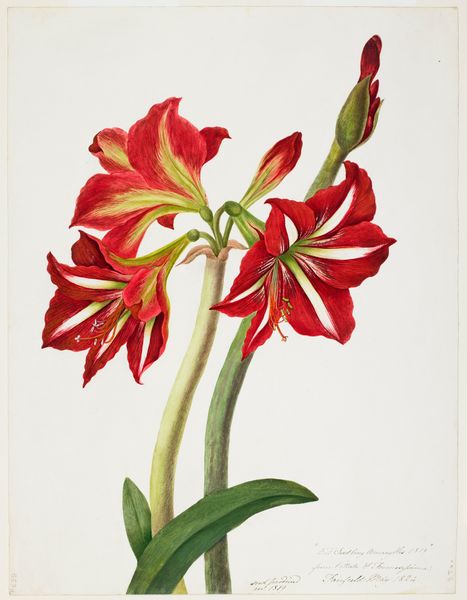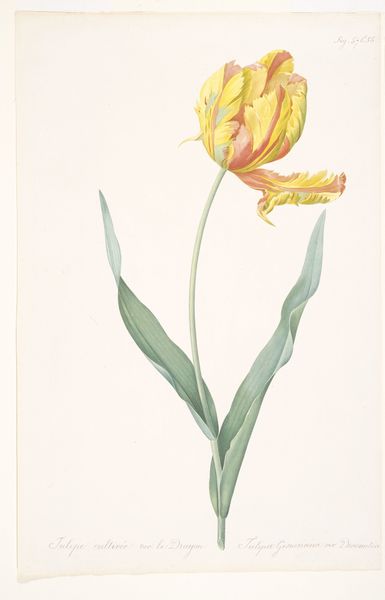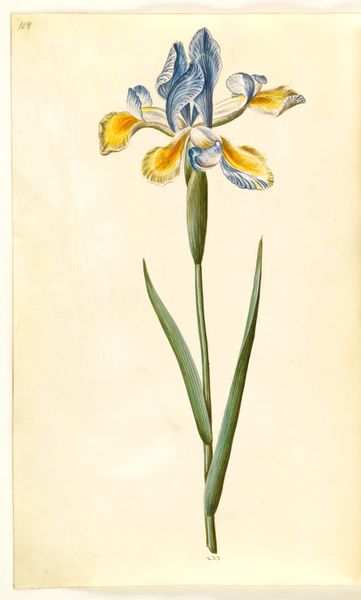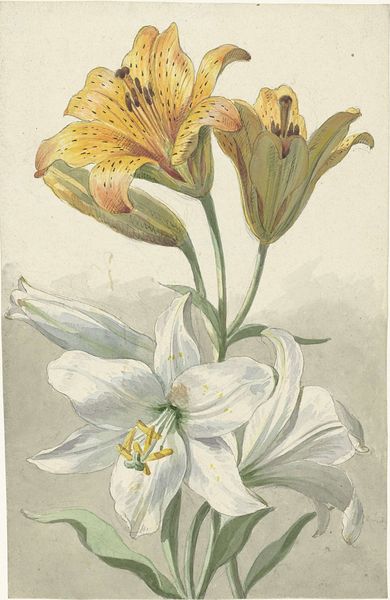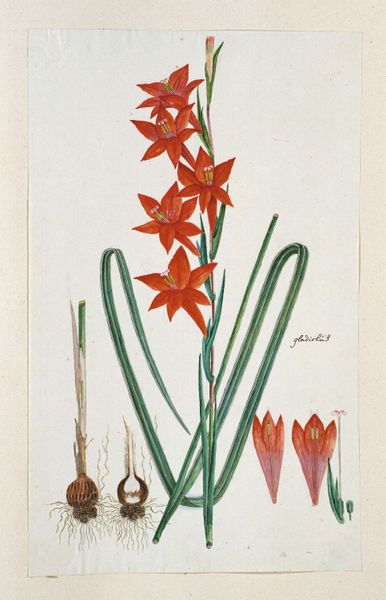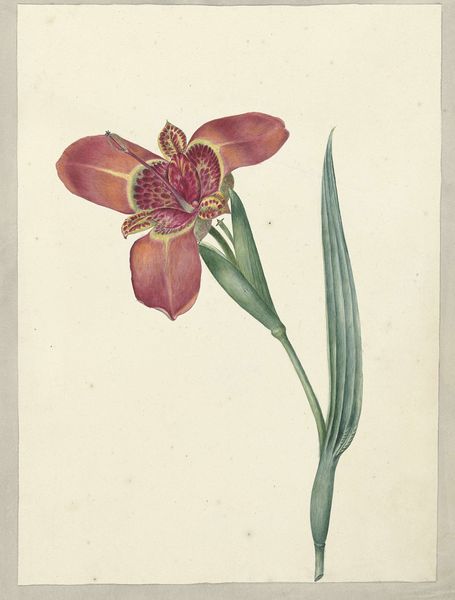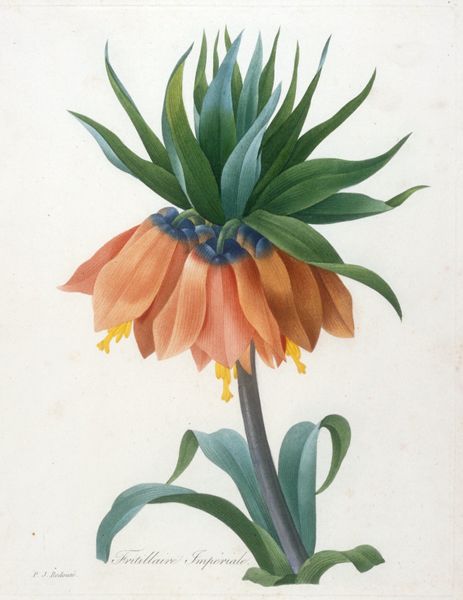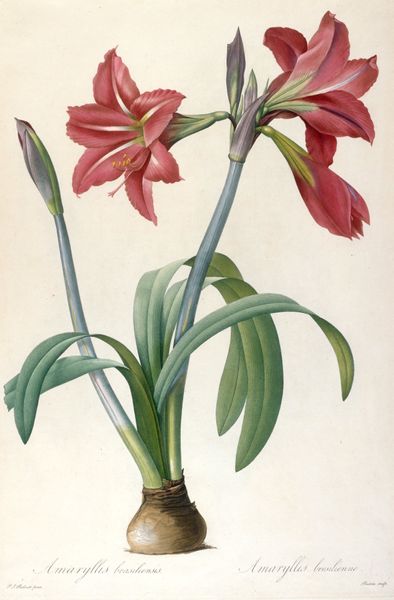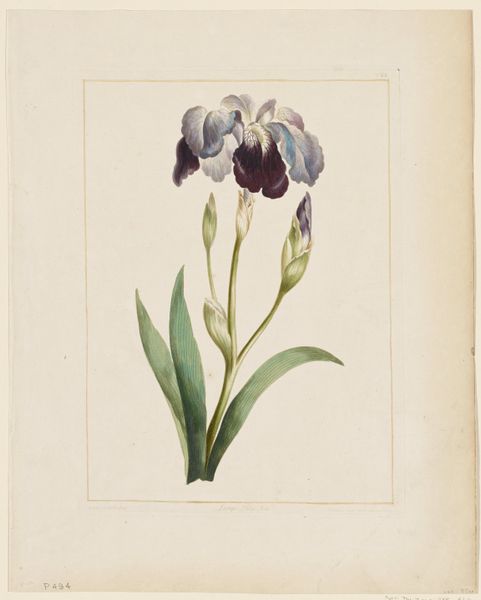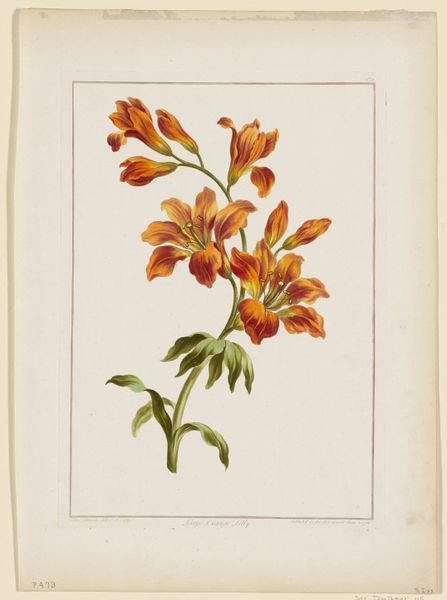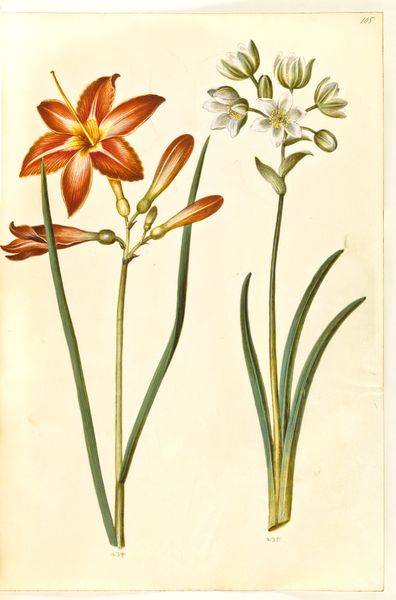
Amaryllis fulgida (Striped-tubed Amaryllis) 1831 - 1834
0:00
0:00
print, watercolor
# print
#
watercolor
#
romanticism
#
watercolour illustration
#
botanical art
#
watercolor
Dimensions: 22 3/4 × 17 5/8 in. (57.79 × 44.77 cm) (plate)29 3/4 × 23 3/4 × 1 1/8 in. (75.57 × 60.33 × 2.86 cm) (outer frame)
Copyright: Public Domain
This print of the Striped-tubed Amaryllis was made by Priscilla Susan Bury, an English botanical illustrator active in the first half of the 19th century. She used a combination of etching and aquatint, processes that rely on acid to bite into a metal plate, which is then inked and printed. Look closely, and you can see how the crispness of the etched lines defines the plant's structure, while the aquatint gives a subtle tonal range to the leaves and petals. These printing methods are far removed from the directness of drawing or painting; they require a division of labor, and the use of specialized tools and knowledge. In Bury’s time, such prints were not only works of art, but also scientific documents, and commodities. They circulated widely, often hand-colored, satisfying the Victorian era’s growing appetite for both natural history and consumer goods. By understanding the means of production behind them, we recognize these images as complex products of their time, not just beautiful depictions of nature.
Comments
No comments
Be the first to comment and join the conversation on the ultimate creative platform.
